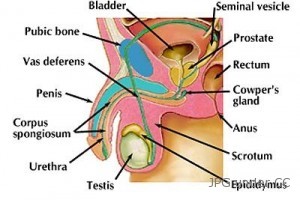Penile Cancer facts

OVERVIEW
Many diseases can be life-threatening. So with men who are suffering from penile cancer may die so soon if not treated. It is said that this disease can affect men’s sexuality to certain levels. This disease can be traced back from malignant tumors in the penis, which are caused by male secretions that produce cancer-producing effects.
Since these male secretions are dangerous, once trapped in the foreskin of the penis and not cleaned out may pose cancer cell growth. Several cell types comprised each of the penile tissues. And from each cell may start to form the types of penile cancer. That is why circumcision in men really makes sense. It should be noted that men’s hygiene is improved in a lot of ways when circumcised.
TYPES AND FORMS
The seriousness of this disease and the suggested treatment needed are determined according to the different types of penile cancer, which are as following:
- Squamous Cell Carcinoma – Almost 95% of penile cancer develops from squamous cells or the flat skin cells of the penis. It is often found on the foreskin of the uncircumcised penis or on the glans. The growth of these tumors is relatively slow. And if diagnosed at an early stage can still be treated.
- Verrucous carcinoma – Squamous cell cancer has an uncommon form known as the verrucous carcinoma, which often occurs anywhere in the skin of the penis. It is also termed as Buschke-Lowenstein tumor, which resembles a benign genital wart. Just like the squamous cell cancer, this disease grows slowly, and can spread into the surrounding tissue.
- Adenocarcinoma – The adenocarcinomas are a rare type of penile cancer that form in the glandular cells. These can develop from sweat glands of the penis skin, and later on the cancer cells invade the tissues underneath the skin, spreading to lymph nodes.
- Melanomas – Melanoma is a skin cancer that forms in the cells responsible in the production of pigment that gives melanocytes or skin color. Unlike the two mentioned types of cancer, melanomas grow and spread fast, making it a more dangerous type of skin cancer. Only 2% or less of penile cancer cases are of this type.
- Basal cell penile cancer – Another type of skin cancer that develops on the penis is the Basal cell cancer. This disease grows slowly and it rarely spreads to other body parts.
- Sarcomas – This disease that develops from the smooth muscle, blood vessels, and other connective tissue cells of the penis, known as sarcomas.
SYMPTOMS
Penile Cancer shows visible symptoms on the skin of the penis. These noticeable symptoms are as following:
- A wart, blister, or ulcer in the penis that are not always painful
- A bleeding penis from within or underneath the foreskin
- A discharge with foul smell
- Phimosis or the difficulty of the foreskin to draw back
- Penis rashes
- The color of the penis or foreskin changes
- An advanced stage (Stage III and Stage IV), show the following symptoms:
- The lymph nodes in the groin are swelling
- Tiredness
- Stomach pain
- Pain in the bones
- Weight Loss
RISK FACTORS
The Human Papillomavirus Infection (HPV) increases the risk of getting penile cancer. This often occurs in men who have not undergone circumcision. Other risk factors/individuals at risk include:
- Men at the age of 60 and older are at higher risk of developing this disease.
- Men who have phimosis, the inability of the foreskin of the penis to draw back over the glands.
- Poor personal hygiene
- Multiple sexual partners
- Smoking
TREATMENT
This disease can be treated in three standard types of treatments:
1. Surgery. It is the most common type of penile cancer treatment. The doctor removes the cancer affected areas through the following operations:
- Mohs microsurgery. The tumor is cut into thin layers through this procedure. A doctor uses a microscope to check cancer cells from the edges and each layer of the removed tumor. Cutting of the layers is performed until no more cancer cells are found.
- Laser surgery. A laser beam is used in this surgical procedure. It acts like a knife in making bloodless cuts in the tissue, or can also be used in removing a surface lesion like tumor.
- Cryosurgery. This procedure uses an instrument to combat abnormal tissue in the affected area.
- Circumcision. It is a type of surgery that removes the foreskin of the penis.
- Wide local excision. This surgical procedure is performed to remove only the cancer affected areas and some normal tissue around them.
- Amputation of the penis. It is a type of surgery wherein the doctor performs a partial penectomy, the removal of part of the penis, or total penectomy, the removal of the entire penis.
2. Radiation therapy. It is a type of cancer treatment that uses high energy x-rays and other radiation types to kill cancer cells or prevent them from growing.
3. Chemotherapy. It is the most commonly used treatment. It uses drugs in stopping the growth of cancer cells. It does that either by stopping the cells from dividing or killing them.
